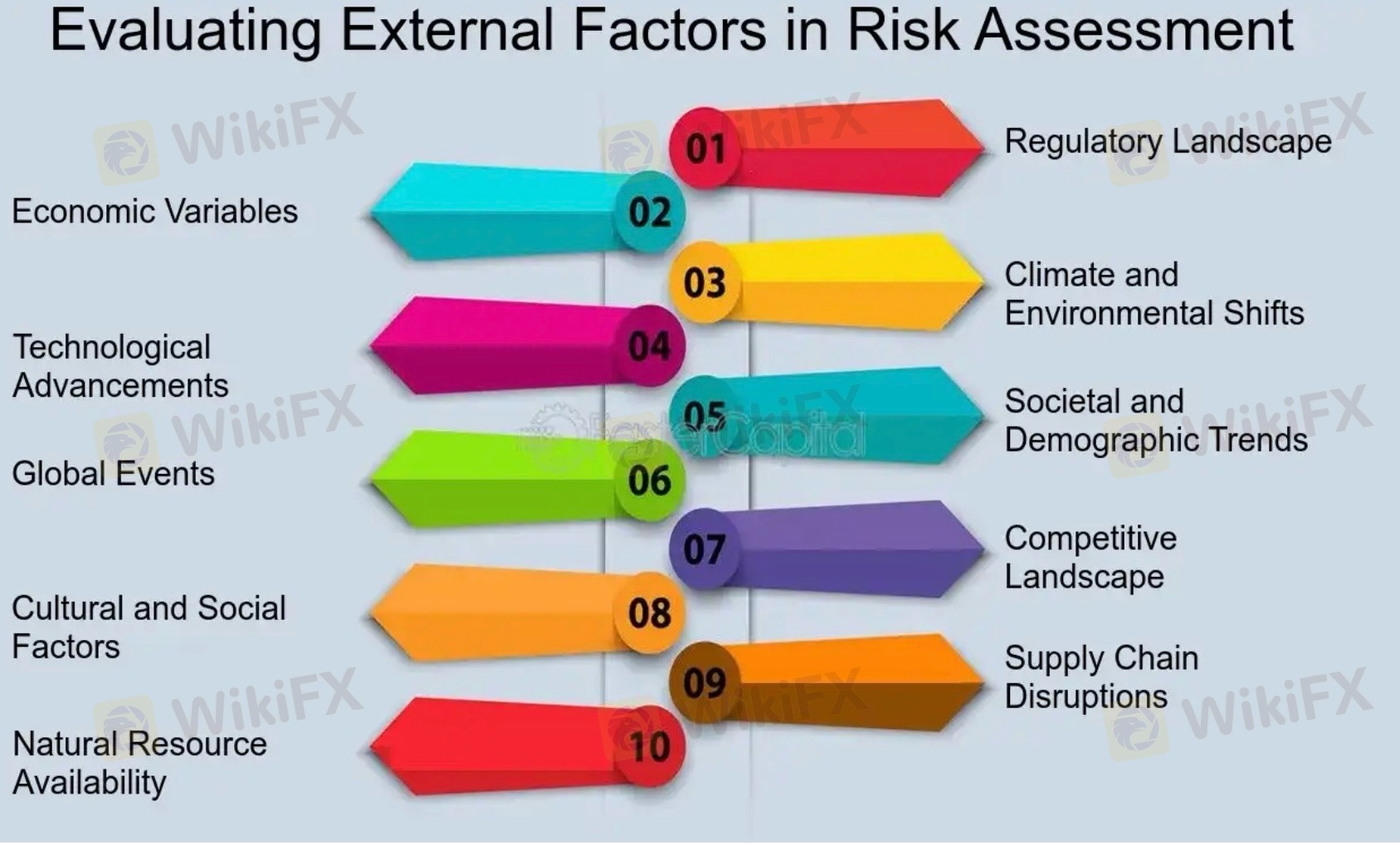
2025-02-18 01:03
NgànhIgnoring macroeconomic events in risk assessment
#forexRiskTip
Ignoring macroeconomic events in risk assessment is a critical mistake, as these events can significantly impact asset prices, market sentiment, and overall volatility. Here’s why it’s risky and how to incorporate macroeconomic analysis into your trading strategy:
Risks of Ignoring Macroeconomic Events:
1. Increased Volatility and Unpredictable Price Movements: Macroeconomic events such as interest rate decisions, GDP reports, and geopolitical tensions can cause sudden market volatility, leading to rapid price swings.
2. Unexpected Losses: Positions can move sharply against you if major announcements (e.g., central bank policy changes) contradict your trade direction.
3. Correlation Risks: Ignoring macroeconomic events may lead to unexpected correlations between assets (e.g., stock and bond markets reacting simultaneously), increasing portfolio risk.
4. Missed Opportunities: Traders may miss profitable opportunities or fail to capitalize on market trends driven by macroeconomic factors.
5. Currency and Commodity Price Impacts: Events like inflation reports or trade agreements can significantly affect currency and commodity prices, impacting international investments.
6. Overexposure to Systematic Risk: Ignoring macroeconomic risks can result in overexposure to systematic risks affecting entire sectors or markets.
How to Incorporate Macroeconomic Analysis into Risk Assessment:
1. Track Key Economic Indicators: Monitor key economic data such as:
• Interest Rates and Central Bank Decisions
• GDP Growth Rates
• Inflation and Employment Reports
• Trade Balances and Tariffs
• Geopolitical Events and Political Elections
2. Use an Economic Calendar: Follow economic calendars (e.g., Investing.com, Forex Factory) to stay informed about upcoming announcements that may impact market volatility.
3. Understand Market Correlations: Analyze how different asset classes (e.g., equities, bonds, commodities, and currencies) react to macroeconomic changes to better manage portfolio diversification and hedging strategies.
4. Adjust Position Sizing and Leverage: Reduce position sizes or leverage ahead of high-impact events to minimize risk exposure to volatility.
5. Hedging Strategies: Use hedging instruments (e.g., options, futures) to protect against adverse movements triggered by macroeconomic events.
6. Scenario Analysis and Stress Testing: Conduct scenario analysis to understand the potential impact of different macroeconomic scenarios on your portfolio.
7. Regular Review and Adaptation: Continuously review and adapt your trading strategy based on evolving macroeconomic trends and geopolitical developments.
Would you like help setting up alerts for key economic events or strategies for hedging macroeconomic risks?
Thích 0
FX4183914356
Nhà đầu tư
Bình luận phổ biến
Ngành
Có cao quá k?
Ngành
Xin ý kiến liberforex
Ngành
Đầu tư CDG
Ngành
Cắt lỗ
Ngành
Có nên chốt lỗ?
Ngành
Hỏi về dòng tiền
Phân loại diễn đàn

Nền tảng

Triển lãm

IB

Tuyển dụng

EA

Ngành

Chỉ số thị trường

Chỉ số
Ignoring macroeconomic events in risk assessment
 Ấn Độ | 2025-02-18 01:03
Ấn Độ | 2025-02-18 01:03#forexRiskTip
Ignoring macroeconomic events in risk assessment is a critical mistake, as these events can significantly impact asset prices, market sentiment, and overall volatility. Here’s why it’s risky and how to incorporate macroeconomic analysis into your trading strategy:
Risks of Ignoring Macroeconomic Events:
1. Increased Volatility and Unpredictable Price Movements: Macroeconomic events such as interest rate decisions, GDP reports, and geopolitical tensions can cause sudden market volatility, leading to rapid price swings.
2. Unexpected Losses: Positions can move sharply against you if major announcements (e.g., central bank policy changes) contradict your trade direction.
3. Correlation Risks: Ignoring macroeconomic events may lead to unexpected correlations between assets (e.g., stock and bond markets reacting simultaneously), increasing portfolio risk.
4. Missed Opportunities: Traders may miss profitable opportunities or fail to capitalize on market trends driven by macroeconomic factors.
5. Currency and Commodity Price Impacts: Events like inflation reports or trade agreements can significantly affect currency and commodity prices, impacting international investments.
6. Overexposure to Systematic Risk: Ignoring macroeconomic risks can result in overexposure to systematic risks affecting entire sectors or markets.
How to Incorporate Macroeconomic Analysis into Risk Assessment:
1. Track Key Economic Indicators: Monitor key economic data such as:
• Interest Rates and Central Bank Decisions
• GDP Growth Rates
• Inflation and Employment Reports
• Trade Balances and Tariffs
• Geopolitical Events and Political Elections
2. Use an Economic Calendar: Follow economic calendars (e.g., Investing.com, Forex Factory) to stay informed about upcoming announcements that may impact market volatility.
3. Understand Market Correlations: Analyze how different asset classes (e.g., equities, bonds, commodities, and currencies) react to macroeconomic changes to better manage portfolio diversification and hedging strategies.
4. Adjust Position Sizing and Leverage: Reduce position sizes or leverage ahead of high-impact events to minimize risk exposure to volatility.
5. Hedging Strategies: Use hedging instruments (e.g., options, futures) to protect against adverse movements triggered by macroeconomic events.
6. Scenario Analysis and Stress Testing: Conduct scenario analysis to understand the potential impact of different macroeconomic scenarios on your portfolio.
7. Regular Review and Adaptation: Continuously review and adapt your trading strategy based on evolving macroeconomic trends and geopolitical developments.
Would you like help setting up alerts for key economic events or strategies for hedging macroeconomic risks?
Thích 0
Tôi cũng muốn bình luận.
Đặt câu hỏi
0bình luận

Chưa có người bình luận, hãy là người bình luận đầu tiên

Đặt câu hỏi
Chưa có người bình luận, hãy là người bình luận đầu tiên